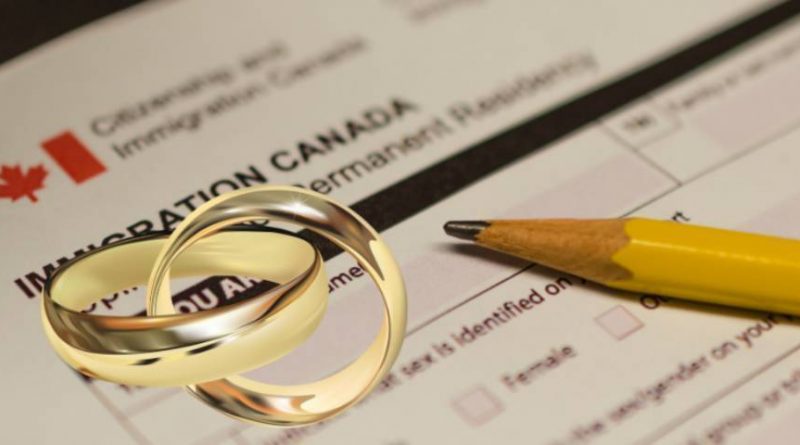Spouse Sponsorship: Assessing a Common-law Relationship
This section contains policy, procedures and guidance used by IRCC staff. It is posted on the department’s website as a courtesy to stakeholders.
In the immigration context, a common-law partnership means that a couple have lived together for at least one year in a conjugal relationship [R1(1)]. A common-law relationship exists from the day on which two individuals can provide evidence to support their cohabitation in a conjugal relationship. The onus is on the applicant to prove that they have been living common-law for at least one year before an application is received at CPC-M.
A common-law relationship is legally a de facto relationship, meaning that it must be established in each individual case, based on the facts. This is in contrast to a marriage, which is legally a de jure relationship, meaning that it has been established in law.
What is cohabitation?
Cohabitation means living together. Two people who are cohabiting have combined their affairs and set up their household together in one dwelling. To be considered common-law partners, they must have cohabited for at least one year. This is the standard definition used across the federal government. It means continuous cohabitation for one year, not intermittent cohabitation adding up to one year. The continuous nature of the cohabitation is a universal understanding based on case law.
While cohabitation means living together continuously, from time to time, one or the other partner may have left the home for work or business travel, family obligations, and so on. The separation must be temporary and short.
Sponsor in Canada and common-law partner abroad
According to case law, the definition of a common-law partner should be read as “an individual who is (ordinarily) cohabiting.” After the one year period of cohabitation has been established, the partners may live apart for periods of time while still maintaining a common-law relationship. For example, a couple may have been separated due to illness or death of a family member, adverse country conditions (e.g. war, political unrest), or employment or education-related reasons, and therefore are not cohabiting at the time an application is submitted. Despite the break in cohabitation, a common-law relationship exists if the couple has cohabited continuously in a conjugal relationship in the past for at least one year and intend to do so again as soon as possible. There should be evidence demonstrating that both parties are continuing the relationship.
Sponsors and their common-law partners are required to complete and submit the form IMM 5532 (PDF, 2.21 MB) (Relationship Information and Sponsorship Evaluation) as part of their application. In addition, they may submit other evidence that they have been living together for at least one year. Additional information is found in the Basic Guide for sponsors and applicants and on the Document Checklist for common-law partners (PDF, 1.81 MB).
This situation is similar to a marriage where the parties are temporarily separated or not cohabiting for a variety of reasons, but still consider themselves to be married and living in a conjugal relationship with their spouse with the intention of living together as soon as possible.
For common-law relationships, the longer the period of separation without any cohabitation, the more difficult it is to establish that the common-law relationship still exists.
Sponsor or common-law partner with a previous common-law relationship
A common-law relationship is severed or ends upon the death of one partner or when at least one partner does not intend to continue the conjugal relationship. In cases where the sponsor or applicant has been in a previous common-law relationship, an officer must examine the circumstances of the case and be satisfied that there is sufficient evidence to indicate that at least one partner intended to stop cohabiting in that conjugal relationship.
Sponsor or common-law partner legally married to another person
Persons who are married to third parties may be considered common-law partners provided their marriage has broken down and they have lived separate and apart from their spouse for at least one year, during which time they must have cohabited in a conjugal relationship with the common-law partner. Cohabitation with a common-law partner can only be considered to have started once a physical separation from the spouse has occurred. A common-law relationship cannot be legally established if one or both parties continue to maintain a conjugal relationship with a person to whom they remain legally married.
When the sponsor is legally married to someone else, officers must be satisfied that the sponsor is separated from and no longer cohabits with the legal spouse. The same restriction applies to the applicant, when applicable. Where information provided in the IMM 5532 (Relationship Information and Sponsorship Evaluation) is insufficient, an officer may request additional evidence, such as:
- a signed formal declaration that the marriage has ended and that the person has entered into a common-law relationship
- a separation agreement
- a court order in respect of custody of children substantiating the marriage breakdown, or
- documents removing the legally married spouse(s) from insurance policies or wills as beneficiaries (a “change of beneficiary” form)
In the above circumstances, the legal spouse will not be examined. This spouse cannot subsequently be sponsored by the principal applicant [R117(9)(d)].
Sponsoring a previously-separated spouse as a common-law partner
A foreign national is not a member of the family class if they were a non-accompanying family member of a sponsor and were not examined [R117(9)(d)]. A legally separated spouse of a sponsor who was a non-accompanying family member and was not disclosed and examined because, at that time, the sponsor was in a common-law or conjugal partner relationship cannot be sponsored by the spouse in Canada.





